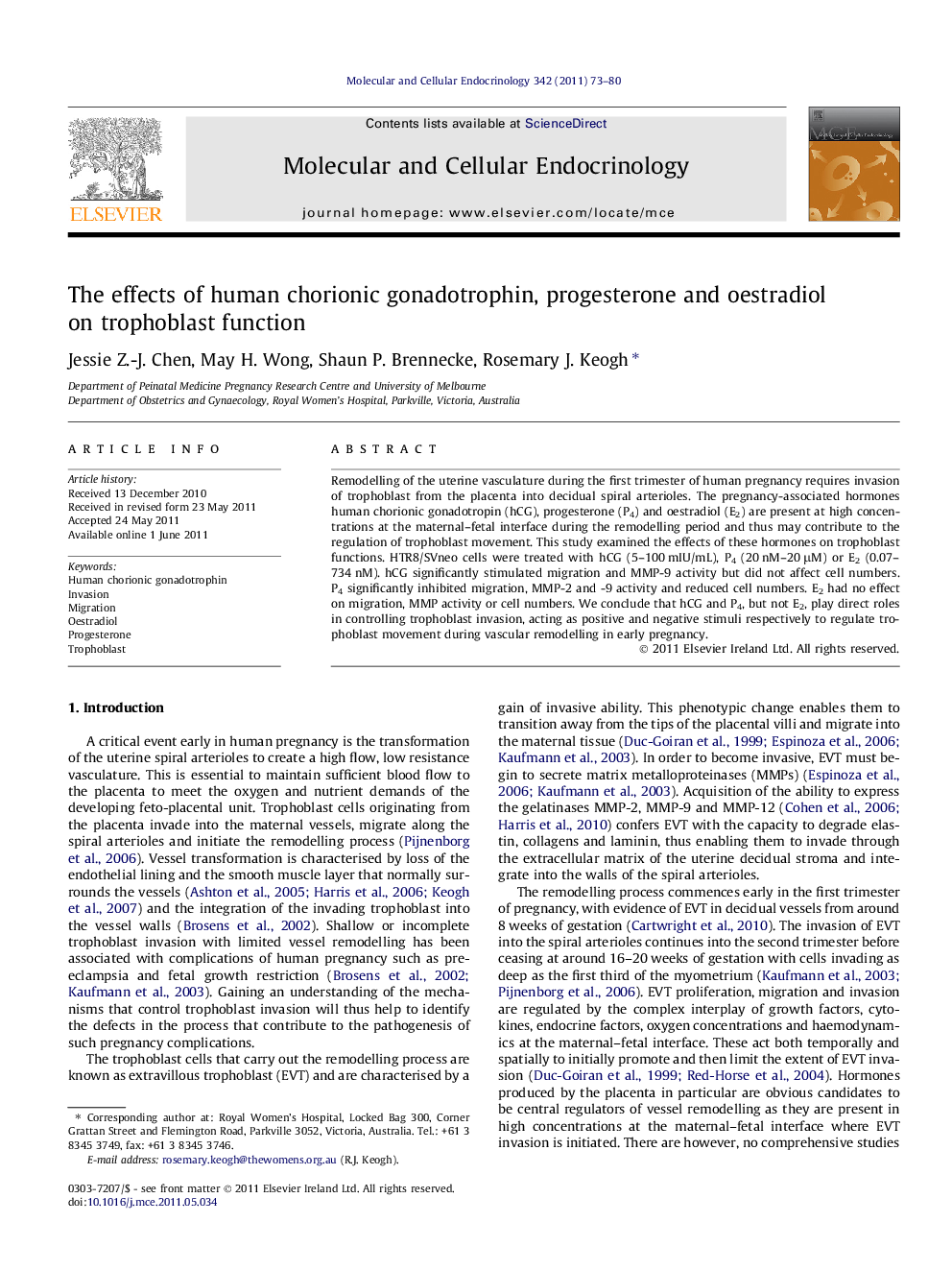| Article ID | Journal | Published Year | Pages | File Type |
|---|---|---|---|---|
| 2196573 | Molecular and Cellular Endocrinology | 2011 | 8 Pages |
Remodelling of the uterine vasculature during the first trimester of human pregnancy requires invasion of trophoblast from the placenta into decidual spiral arterioles. The pregnancy-associated hormones human chorionic gonadotropin (hCG), progesterone (P4) and oestradiol (E2) are present at high concentrations at the maternal–fetal interface during the remodelling period and thus may contribute to the regulation of trophoblast movement. This study examined the effects of these hormones on trophoblast functions. HTR8/SVneo cells were treated with hCG (5–100 mIU/mL), P4 (20 nM–20 μM) or E2 (0.07–734 nM). hCG significantly stimulated migration and MMP-9 activity but did not affect cell numbers. P4 significantly inhibited migration, MMP-2 and -9 activity and reduced cell numbers. E2 had no effect on migration, MMP activity or cell numbers. We conclude that hCG and P4, but not E2, play direct roles in controlling trophoblast invasion, acting as positive and negative stimuli respectively to regulate trophoblast movement during vascular remodelling in early pregnancy.
► We examine the effects of pregnancy hormones on trophoblast functions. ► hCG stimulated migration and MMP-9 activity but did not affect cell numbers. ► P4 inhibited migration, MMP-2 and -9 activity and reduced cell numbers. ► E2 had no effect on migration, MMP-2 or -9 activity or cell numbers. ► hCG and P4, but not E2, play direct roles in controlling trophoblast invasion.
